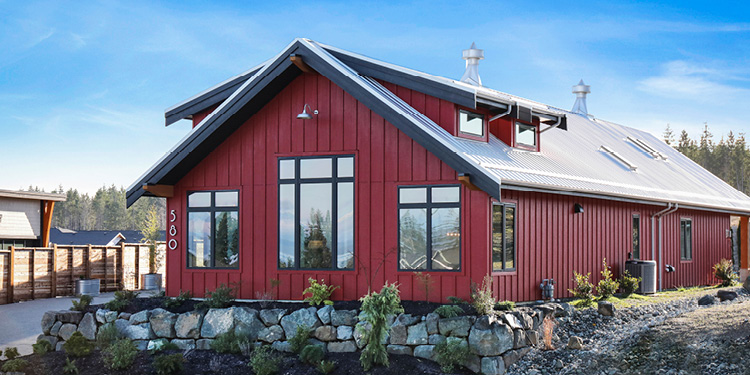How to better understand your winter electricity use
January 30, 2019
Winter isn’t coming; it’s here! While we’re still a few months away from the release of the final season of Game of Thrones, winter has definitely arrived in BC.
During the winter months, we receive calls from some customers who have questions about why their electric bills are higher than usual. This year, any changes in bills reflect changes in use, as our electric rates have remained the same for the third year.
Electricity use can increase as much as 80 per cent in the winter months for our customers who are heating their homes with electricity.1 Increased energy requirements can lead to higher than expected electricity bills. We’re here to help with an energy use monitoring tool, energy-saving tips and rebates.
Understand your electricity use
We offer a free online energy tracking tool , with access to detailed information about your electricity use throughout the billing period. This tool lets you see how your electricity use changes at different times including weekly, daily and hourly. By using the tool to identify periods of high use, you may find opportunities to save energy.
What about Bob?
Let’s take a look at Bob, a fictional FortisBC electric customer. Bob lives in the interior with his wife Jen. They heat their three bedroom home–which is fifty years old–with electricity. Last year, after receiving a bill that was higher than expected, Bob contacted our customer service team and learned about our online energy tracking tool. After completing the simple sign-up, Bob began monitoring his home’s energy use.

Using the interactive charts and comparisons, Bob realized that his energy use had been increasing over the last few years. Bob decided to channel his inner Sherlock Holmes and began doing some in-house investigating.
By analyzing his hourly electricity use, Bob was able to see that he and his wife regularly left the heat on all day, every day, despite the fact that they both work outside the home. To address this, Bob purchased a programmable thermostat, which Jen installed and programmed to lower the heat while they were at work, and kick in before they arrived home, ensuring they’d stay toasty without wasting energy.
Bob thought he’d really cracked the case of their higher winter energy use when he noticed his home’s energy use shot up during the two weeks their families visited for the holidays.
“That’s it!” he told Jen. “Next year, we’re spending the holidays alone.”
Jen quickly squashed that idea, as she enjoys hosting family, baking treats and preparing holiday dinners. Jen acknowledges that these activities may drive up their electricity use, but she believes they’re well worth it. Jen agreed to help Bob find a few other ways to reduce their energy use around the house.
Taking on the role of Watson to Bob’s Sherlock, Jen visited our website for no-cost and low-cost energy saving tips. On a rare sunny winter Saturday, Bob and Jen worked together to weatherize and draftproof their older home.
Harnessing the power of a heat pump
Pleased with the initial results he saw on the tracking tool, Bob researched one final way to reduce energy use–installing a heat pump. Because a heat pump is the most affordable way to heat your home with electricity, Bob realizes he and Jen could save about $1,400 annually on space heating costs by installing an air source heat pump (ASHP) that worked with their electric furnace (ASHPs also work with electric baseboards.)2,3
After visiting our rebates page and learning more about heat pumps and the rebates that are available, Bob and Jen purchased and installed a heat pump during the summer.
Satisfied with the way they had educated themselves, made simple changes to reduce their energy use, and invested in a heat pump, Bob and Jen are excited to view this year’s winter energy use and see their energy use decrease.

By tracking your energy use and taking simple steps that fit your lifestyle to save energy, you too can reduce your usage and save on your electricity costs. Visit our energy savings page for more information on how to take control of your energy use. Because every house is different, your usage and savings will differ from Bob and Jen’s.
We’re always here to help. If you’re having difficulty paying your bill this winter, contact us and together, we’ll find a solution.
1Source: 2012 FortisBC Residential End-Use survey: Energy Consumption for Electric Only Single Family Dwellings, Electrically Heated House – 20,800 kWh per year average use. Calculation compares May - August to January - April.
2Source: FortisBC energy calculator, assuming a 2,000 square foot home, with baseboards at least 15 years old and an air source heat pump installed with an HSPF of 10.
3Source: FortisBC energy calculator, assuming
a 2,000 square foot home, with an existing electric furnace at least 15 years old and an air source heat pump with an HSPF of 10.



